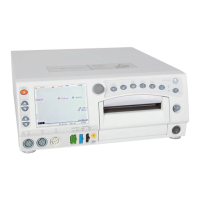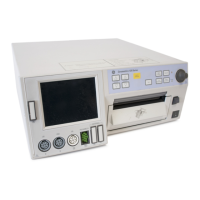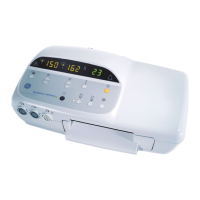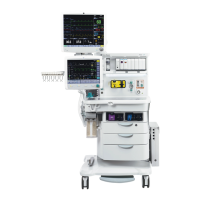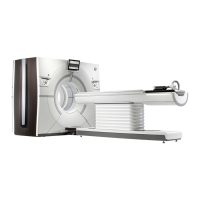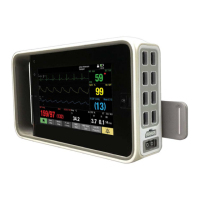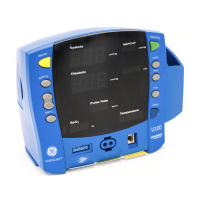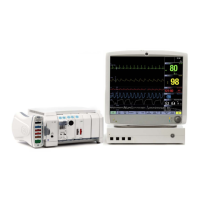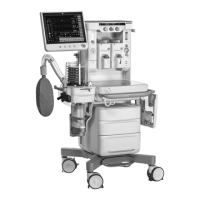9-4 250cx Series Maternal/Fetal Monitor Revision C
2036946-001
Maternal Pulse Oximetry Monitoring: MSpO2 Technology
Theory of Operation
Ohmeda TruSignal™ Oximetry
TruSignal™ Enhanced SpO
2
Ohmeda’s TruSignal Enhanced SpO
2
offers fine performance, especially during
challenging conditions of clinical patient motion and low perfusion. With ultra-low-
noise technology, TruSignal selects the appropriate clinically-developed algorithm
to correct weak signals and generate reliable saturation readings. The waveform
update rate is 48 Hz. SpO
2
and pulse rate are continuously calculated using a 12-
second weighted moving average controlled by priority in the TruSignal algorithms.
Signal processing
Ohmeda pulse oximetry uses a two-wavelength pulsatile system—red and infrared
light—to distinguish between oxyhemoglobin (O
2
Hb) and reduced hemoglobin
(HHb). The light is emitted from the oximeter sensor, which contains a light source
and a photodetector.
The light source consists of red and infrared light-emitting diodes (LEDs).
The photodetector is an electronic device that produces an electrical
current proportional to incident light intensity.
The two light wavelengths generated by the LEDs are transmitted through the tissue
at the sensor site and are modulated by arterial blood pulsation. The photodetector in
the sensor converts the light intensity information into an electronic signal that is
processed by the monitor.
Masimo SET
®
Signal Processing
The Masimo MS-11 technology uses a two-wavelength pulsatile system to
distinguish between oxygenated and deoxygenated blood. Signal data is obtained by
passing red (rd) (663 nm wavelength) and infrared (ir) (880 nm wavelength) light
through a capillary bed (e.g., a fingertip, a hand, a foot) and measuring changes in
light absorption during the pulsatile cycle. The Masimo sensor has red and infrared
light-emitting diodes (LEDs) that pass light through the site to a photodiode
(photodetector). The photodetector receives the light, converts it into an electronic
signal and sends it, via a patient cable, to the MSpO
2
parameter for calculation of the
patient’s functional oxygen saturation and pulse rate.
The MASIMO SET
®
MS-11 pulse oximeter is based on three principles:
1. Oxyhemoglobin and deoxyhemoglobin differ in their absorption of red and
infrared light (spectrophotometry).
2. The volume of arterial blood in tissue and the light absorbed by the blood
changes during the pulse (plethysmography).
3. Arterio-venous shunting is highly variable and that fluctuating
absorbance by venous blood is a major component of noise during the
pulse.

